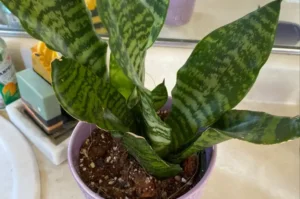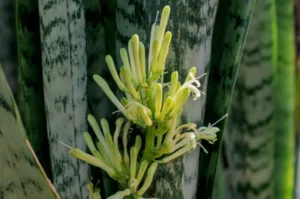Snake plants, also known as Sansevieria, are well-known houseplants due to their low maintenance and air-purifying properties. However, if you notice that your snake plant is not growing as expected, several factors might be responsible. In this article, we will explore the possible causes, solutions, and benefits of a healthy snake plant.
Causes Of a Snake Plant Not Growing
1. Insufficient Light
Snake plants can tolerate low light, but they grow best in bright, indirect sunlight. If placed in a dimly lit area, their growth slows down significantly.
2. Overwatering or Underwatering
An improper watering schedule can harm the plant. Overwatering can lead to root rot and diseases, while underwatering can dry out the plant, affecting its growth.
3. Poor Drainage System
A well-draining soil mix is crucial for snake plants. If the drainage system is inadequate, excess water gets trapped in the soil, causing root rot and hindering growth.
4. Lack of Nutrients
Like all plants, snake plants need essential nutrients such as nitrogen, potassium, and carbohydrates to thrive. If the soil lacks these nutrients, the plant may struggle to grow.
5. Temperature and Humidity Issues
Snake plants prefer warm temperatures between 60-80°F (15-27°C). Exposure to extreme cold or sudden temperature fluctuations can stunt their growth.
6. Pot Size and Root Bound Issues
If the pot is too small, the roots become bound, restricting growth. Repotting into a slightly larger container can help promote healthy root expansion.
7. Pests and Diseases
Pests like spider mites and mealybugs can attack the snake plant, sucking out nutrients and slowing growth. Additionally, fungal diseases caused by excessive moisture can also be problematic.
How To Fix The Slow Growth In Snake Plants?
1. Provide Adequate Light
Place your wind plant in a spot with shinning, circuitous daylight. If characteristic light is inadequately, consider utilizing manufactured develop lights.
2. Follow a Proper Watering Schedule
Water your plant as it were when the beat inch of soil is dry. Guarantee the pot has seepage gaps to anticipate water accumulation.
3. Improve the Drainage System
Use a well-draining potting mix with ingredients like sand, perlite, or cactus soil to enhance drainage.
4. Fertilize Regularly
Feed your snake plant with a balanced liquid fertilizer every 2-3 months to provide essential nutrients, including carbohydrates, for energy and growth.
5. Maintain Optimal Temperature and Humidity
Keep your snake plant in a warm environment, away from cold drafts and sudden temperature changes.
6. Repot When Necessary
If the roots are overcrowded, repot your plant into a slightly larger container to encourage growth.
7. Treat Pests and Diseases
Inspect your plant regularly for pests and use insecticidal soap or neem oil to eliminate infestations. Also, avoid overwatering to prevent fungal diseases.
Benefits Of A Healthy Snake Plant
- Air Purification: Snake plants filter toxins and improve indoor air quality.
- Low Maintenance: They require minimal care and thrive in various conditions.
- Aesthetic Appeal: Their upright, striking leaves enhance home decor.
- Oxygen Production: Snake plants release oxygen, promoting a healthier living space.
Frequently Asked Questions (FAQs):
What is the ideal watering frequency for a snake plant?
You should water your snake plant every 2-3 weeks, allowing the soil to dry out completely between watering sessions.
Can a snake plant grow in low light?
Yes, snake plants can survive in low light, but their growth will be slower. For faster growth, place them in bright, indirect sunlight.
Conclusion
A slow-growing snake plant can be frustrating, but understanding the causes and implementing the right care strategies can make a significant difference. Providing proper light, maintaining a good watering schedule, improving soil drainage, and protecting against pests and diseases will ensure your snake plant thrives. With the right care, your snake plant will not only grow but also enhance your living space with its beauty and benefits.






